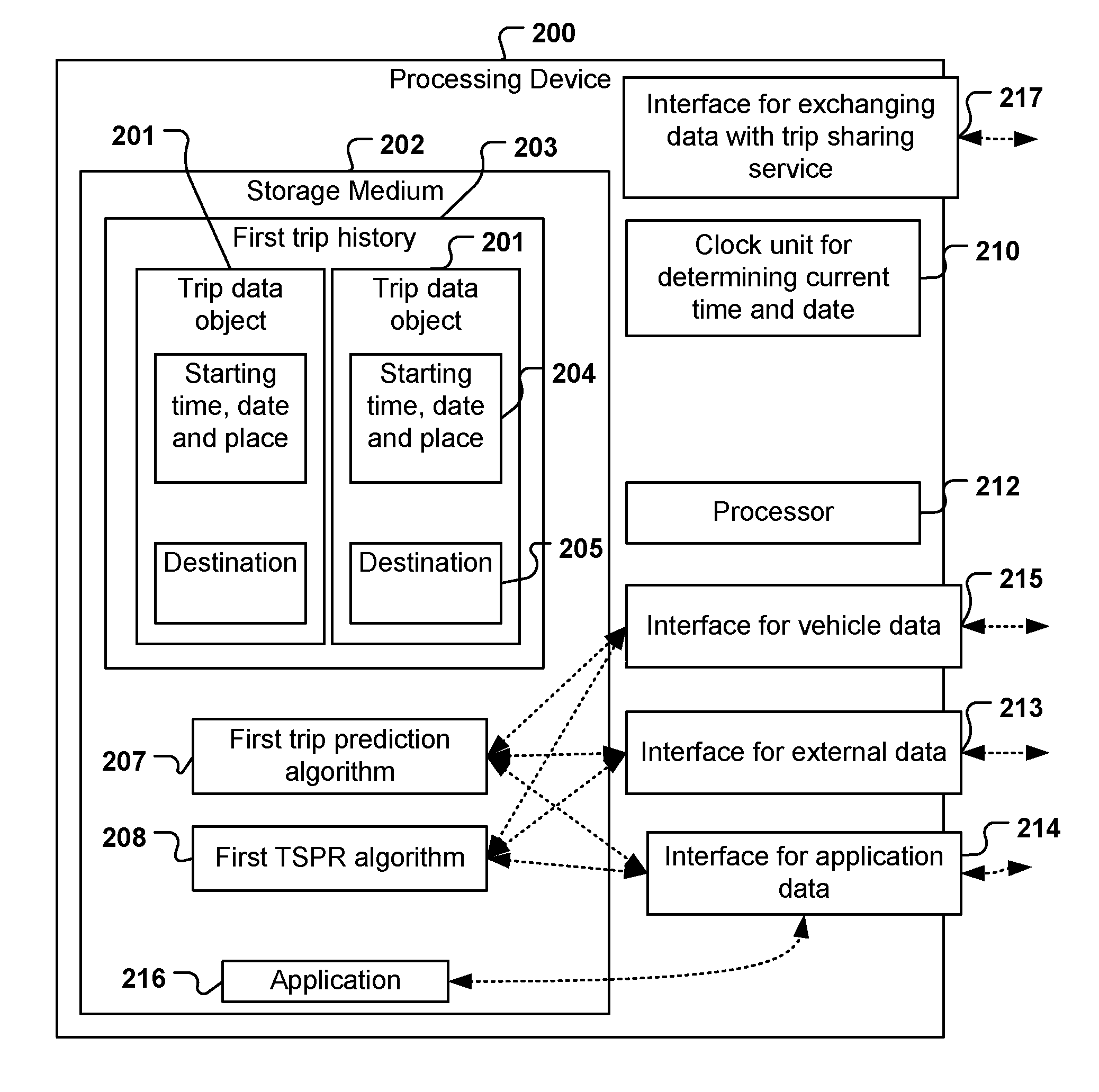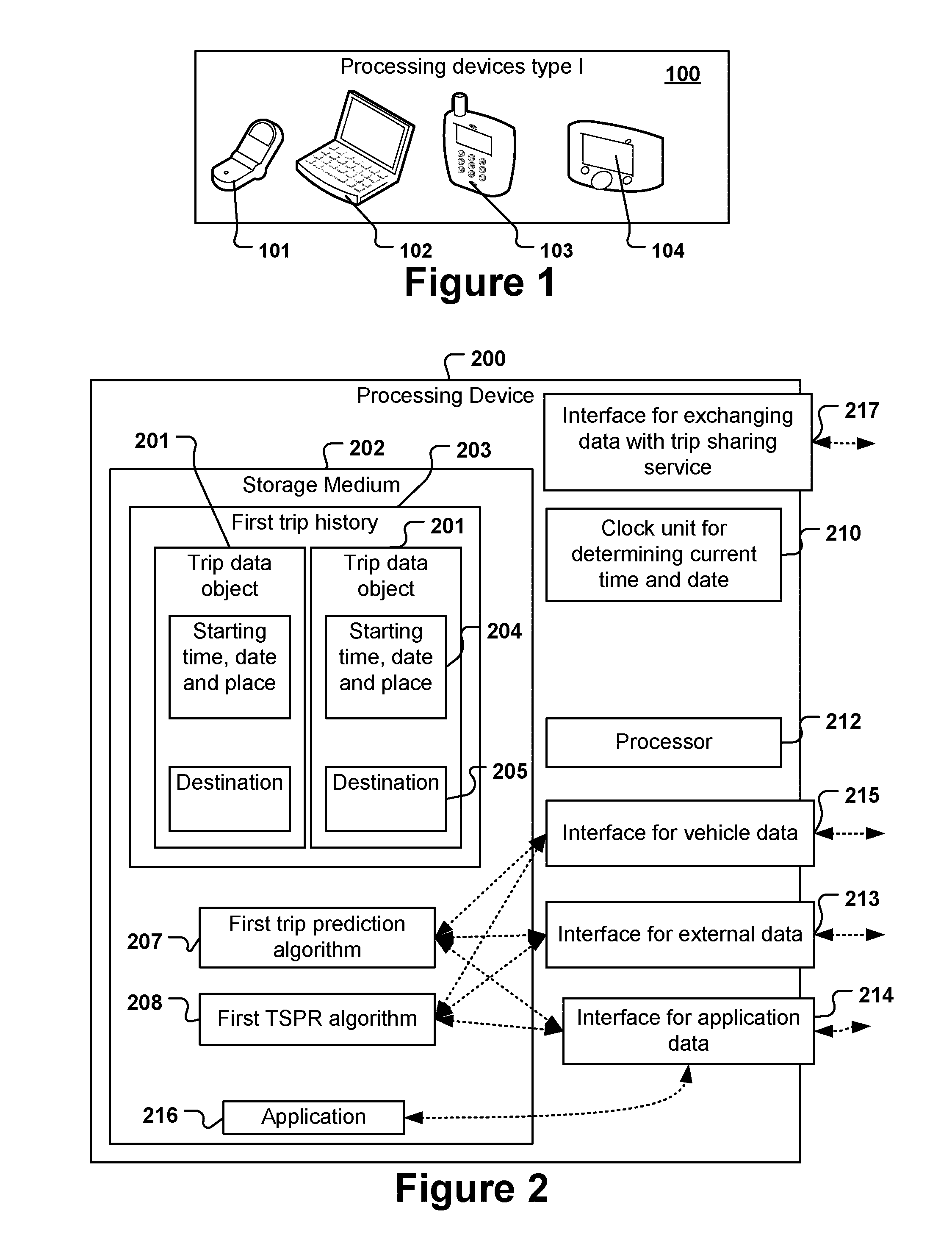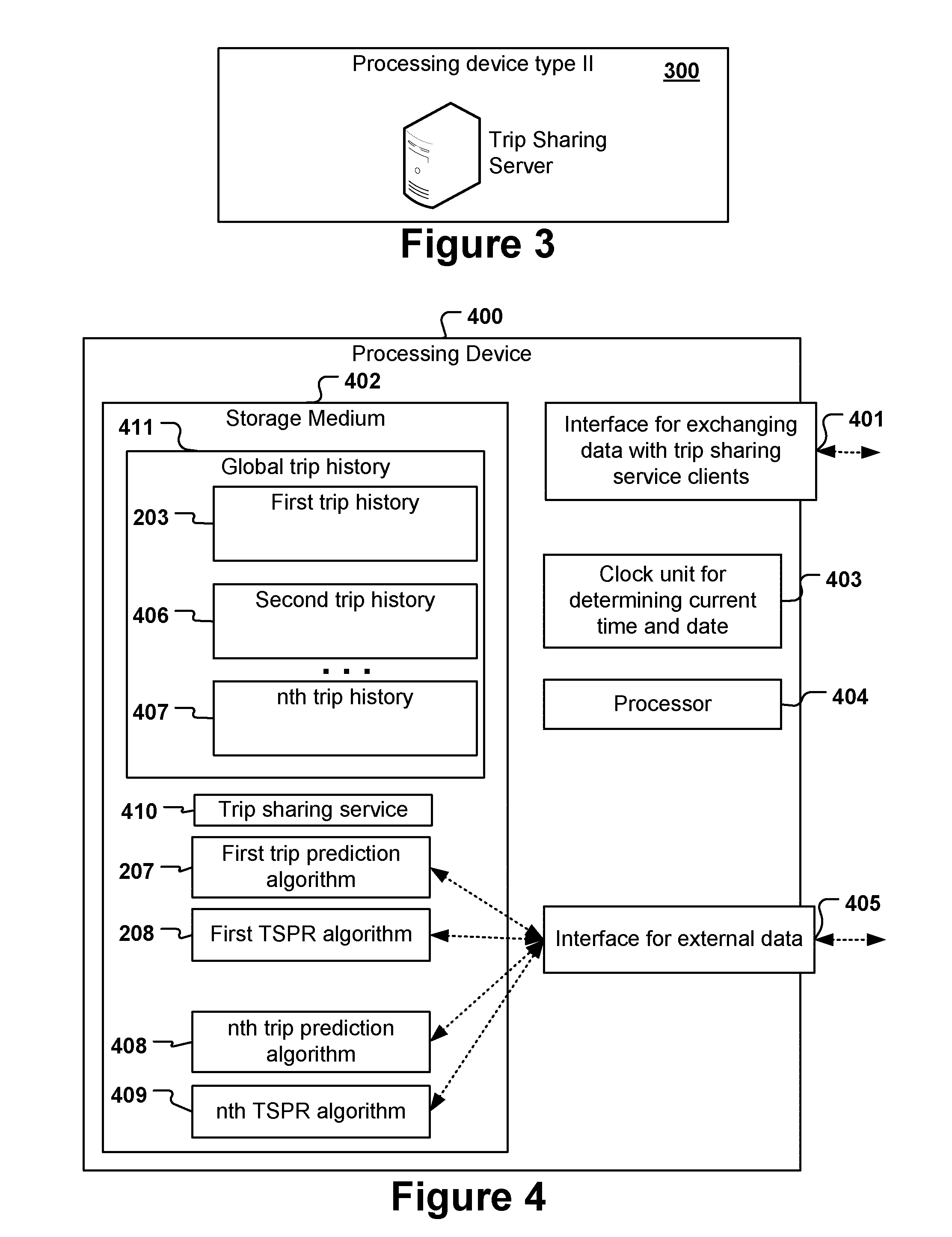Method for Allocating Trip Sharing
a technology for sharing and trips, applied in the field of data processing, can solve the problems of wasting time and time in the log-in process and entering trip data, and affecting the efficiency of the allocation of free car seats for passengers, and achieves the effect of reducing the probability of occurrence, high accuracy and high probability of occurren
- Summary
- Abstract
- Description
- Claims
- Application Information
AI Technical Summary
Benefits of technology
Problems solved by technology
Method used
Image
Examples
Embodiment Construction
ollowing is applicable to explicitly specified planned trips as well as automatically predicted trips and trip series. Preferentially, it applies to automatically predicted trips which are particularly advantageous due to the reduced number of man-machine interaction steps necessary.
[0147]A user may use the tip sharing service to commute to work and back. Typically, the employees all arrive within a narrow time frame within 8 a.m. and 9 a.m. The trips from work to home executed by various employees are distributed within a broader time range, e.g. between 4 p.m. and 8 p.m. and may vary from day to day. It may therefore be important for a user of the trip sharing service to know how many people or employees using the trip sharing service are still at the company's site at each working day afternoon or evening. As the user used the trip sharing service to reach his office as passenger, he has to be sure that at least 2 or 3 other trips from his office to home are available and to quit...
PUM
 Login to View More
Login to View More Abstract
Description
Claims
Application Information
 Login to View More
Login to View More - R&D
- Intellectual Property
- Life Sciences
- Materials
- Tech Scout
- Unparalleled Data Quality
- Higher Quality Content
- 60% Fewer Hallucinations
Browse by: Latest US Patents, China's latest patents, Technical Efficacy Thesaurus, Application Domain, Technology Topic, Popular Technical Reports.
© 2025 PatSnap. All rights reserved.Legal|Privacy policy|Modern Slavery Act Transparency Statement|Sitemap|About US| Contact US: help@patsnap.com



